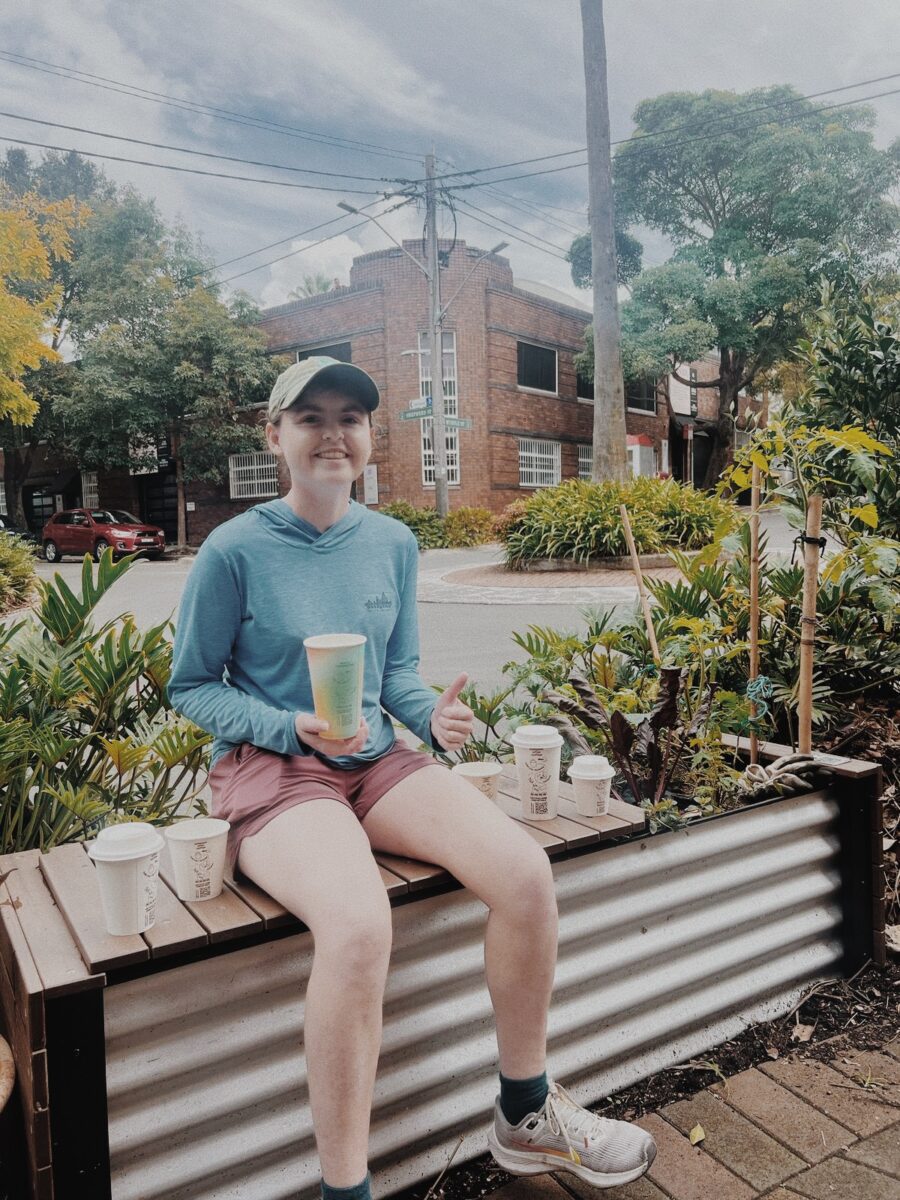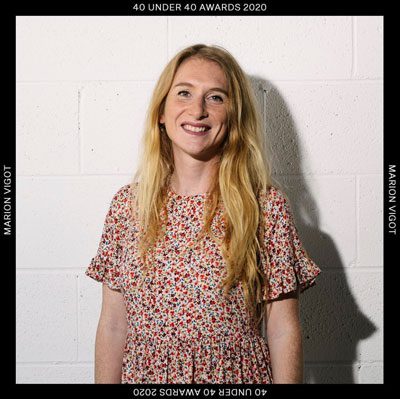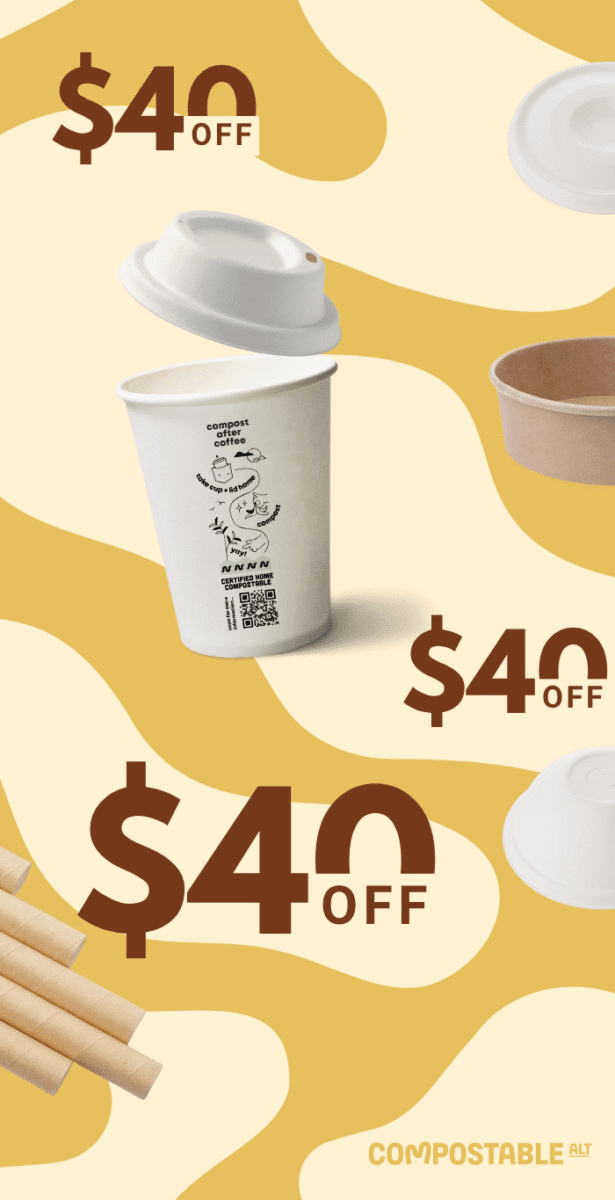Coolseats x Compostable Alternatives: Our Cups Passed the Backyard Test
If you’ve ever doubted whether compostable coffee cups actually break down in real-world conditions, this blog post is for you. We recently partnered with sustainability legend Michael Mobbs, who ran a trial of our certified home compostable cups in one of his famous Coolseats – and the results are in:
“I’ve tested Compostable Alt coffee cups in my coolseats and – yes, they do compost! Phew – so good.”
— Michael Mobbs, environmental author + off-grid advocate
Michael’s interns placed our cups into a Coolseats composting unit on a street corner in Chippendale, NSW. Seven weeks later, that cup had broken down into compost indistinguishable from fruit peels, coffee grounds, and veggie scraps! And just like that, we had proof — again — that our cups do what we say they do.
But Wait, What’s a Coolseats?
Invented by Michael Mobbs, a pioneer in sustainable living and the author of Sustainable House and Sustainable Food, the Coolseats is an urban composting bench designed to compost food scraps in public spaces, while giving people a place to sit. It’s a simple yet radical idea: an all-in-one compost bin, seat and garden bed !
Coolseats are all about creating small, local composting solutions in the very places where waste is created: cafes, parks, streets. No trucks. No energy-intensive processes. Just nature doing its thing.
Michael has installed them around his neighbourhood in Sydney, where they sit quietly on street corners, or in front of cafes, turning food waste into compost. The units have composted everything from eggshells and banana skins to paper packaging and coffee grounds.
So when Michael offered to trial our home compostable coffee cups in one of his Coolseats, we were all for it! This was the perfect real-world test: no glossy lab conditions, just dirt, scraps, and time. Check out the video below to see how it works!
What Happened in the Trial
Michael’s interns placed our certified home compostable coffee cups (and lid) into a Coolseats located at the corner of Myrtle and Shepherd Streets in Chippendale, a high-traffic area surrounded by homes and cafes.
They cut the cups in smaller bits on one side of the Coolseats and left it whole in another compartment to test the difference in biodegradation.
The trial started in early April 2025. By week 7, the cup had fully broken down. No plastic fragments. No lingering liner. Just nutrient-rich compost.
And if you think “seven weeks” sounds like a long time, think again. The timeframe under which a certified home compostable product should break down can be up to 24 weeks (6 months), so we were really happy with this result!
Also most so-called “compostable” cups on the market can sit in landfill for years if not processed correctly. That’s because the majority of them are commercially compostable, not home compostable.
Why This Matters: Home vs Commercial Composting
Here’s the issue: the word “compostable” gets thrown around a lot in packaging. But there’s a big difference between commercially compostable and home compostable:
Home compostable: Breaks down in your backyard or local compost bin, no special conditions required.
Commercially compostable: Needs high heat (55–70°C), moisture, aeration, and 8–12 weeks in a controlled facility to break down.
In Australia, very few councils accept compostable packaging in kerbside FOGO (Food Organics Garden Organics) bins. And in NSW, the EPA has banned compostable packaging (even certified ones) from FOGO collections altogether. That means most commercial compostable cups have no recovery pathway — they’re sent to landfill.
By contrast, our cups are certified to Australian Standard AS 5810, which requires:
90% disintegration within 6 months (particles <2mm) in a backyard compost bin
90% biodegradation within 12 months at ambient temps (20–30°C)
No toxic effects on plants or earthworms
No hazardous substances above allowable limits
And now, thanks to Michael’s Coolseats trial, we’ve seen those standards met again in real-world compost.
Composting Is Nature’s Recycling
What’s great about the Coolseats is it reminds us: composting doesn’t need to be complicated. It’s just nature doing what it’s always done: breaking things down and cycling nutrients back into the soil.
At Compostable Alternatives, this is exactly what we want to support. Not just “less bad” packaging, but products that genuinely return to the earth. That’s why all our products are certified home compostable, not commercially compostable. It’s also why we’re proud to partner with changemakers like Michael Mobbs, who are creating local solutions that can scale.
Because imagine if every cafe had one or two (or three!) Coolseats. Or a compost bin. Or encouraged customers to compost their packaging at home. We could keep millions of cups out of landfill – and create thousands of kilos of healthy soil in the process.
According to the Australian Plastics Flows and Fates Study 2019–20 National Report, prepared for the Australia Government Department of Agriculture, Water and the Environment,
In Australia, we currently we use:
- 1.840 Billion disposable coffee cups including plastic or bioplastic/PLA lined cup (=commercially compostable only) = a whooping 22.5 tonnes of waste!
- 910 Million disposable cold cups including plastic and bioplastic/PLA = 12.6 tonnes of waste!
- 1.470 Billion disposable hot cup lid including plastic and bioplastic/PLA = 6.1 tonnes of waste!
- 590 Million disposable cold cup lid including plastic and bioplastic/PLA = 2.3 tonnes of waste!
What This Means for Cafes
If you’re a cafe owner, the Coolseats trial proves that you can reduce your environmental impact without waiting for infrastructure or policy to catch up. Here’s what you can do right now:
Set up a compost bin behind your cafe (or install a Coolseats!)
Use only certified home compostable products like our home compostable coffee cups and hot or cold lids
Educate your customers and let them know they can compost their cups at home (check out our amazing posters!)
Avoid greenwashed packaging that claims to be “eco” but ends up in landfill. Check our guide on coffee cup greenwashing in Australia
Most importantly, you’ll be making waste valuable again by turning it into something that feeds life, and grow food rather than pollutes it.
Let’s Grow a Better System
We’re so grateful to Michael and his team for putting our cups to the test. The results were everything we hoped for. But more than that, this trial is a reminder that local composting is possible, powerful, and already happening.
Remember: it’s not about perfection but about participation. And the more people who jump in, the faster this movement grows. Check this article to start composting Today!
Ready to Start Composting in 2025?
About the author:
Marion is a French Australian entrepreneur, profoundly interested in the composting industry. Her words are her own thoughts and come from her research and learning. Although she quotes and sources the information she shares, Marion is not a scientist or a researcher and her opinions should not be understood as a scientific truth.
Through her findings and experience in the industry, she is attempting to support hospitality businesses and producers in their search of alternative choices to single-use and other types of plastic packaging. You should always do your own research to best inform yourself.
Share this article :
Compost Club Blog
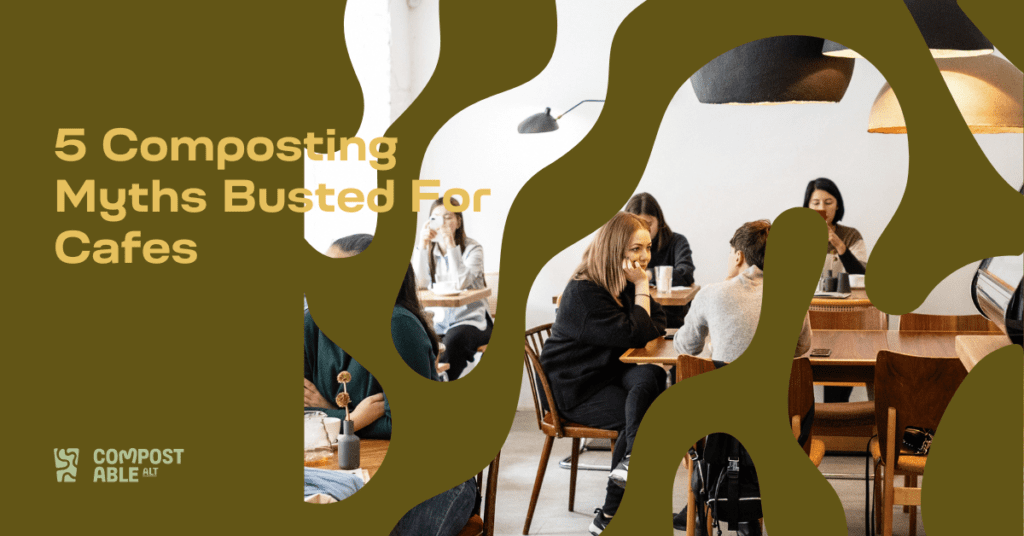
5 Coffee Takeaway Cup Composting Myths Busted for Cafes
Do you offer takeaway coffees? Let’s bust the 5 biggest coffee takeaway cup myths so you can make the right call for your business, your customers, and the planet.
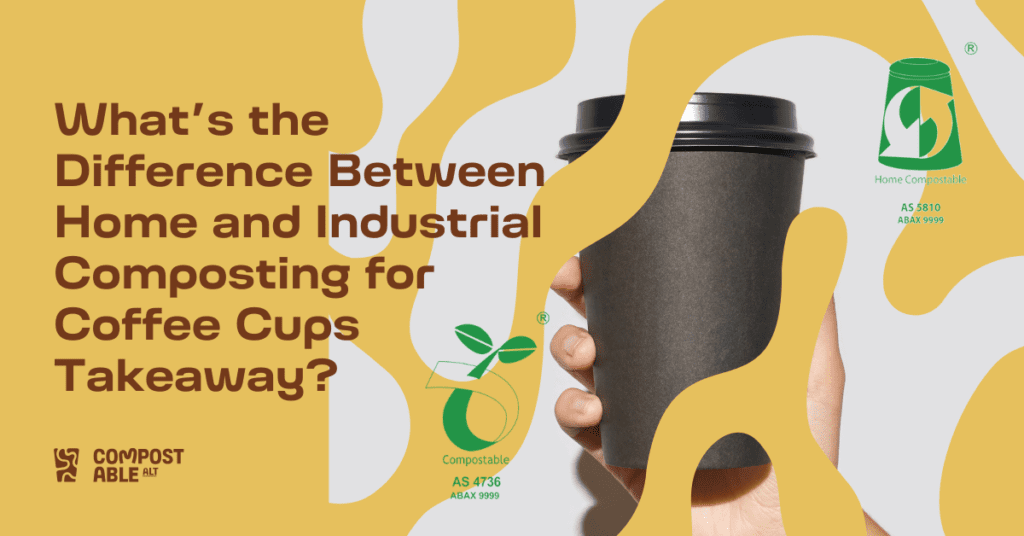
What’s the Difference Between Home and Industrial Composting for Coffee Cups Takeaway?
If you’re a café owner, a sustainability nerd, or just someone trying to do the right thing, knowing the difference between home and industrial composting is key to making better packaging decisions.
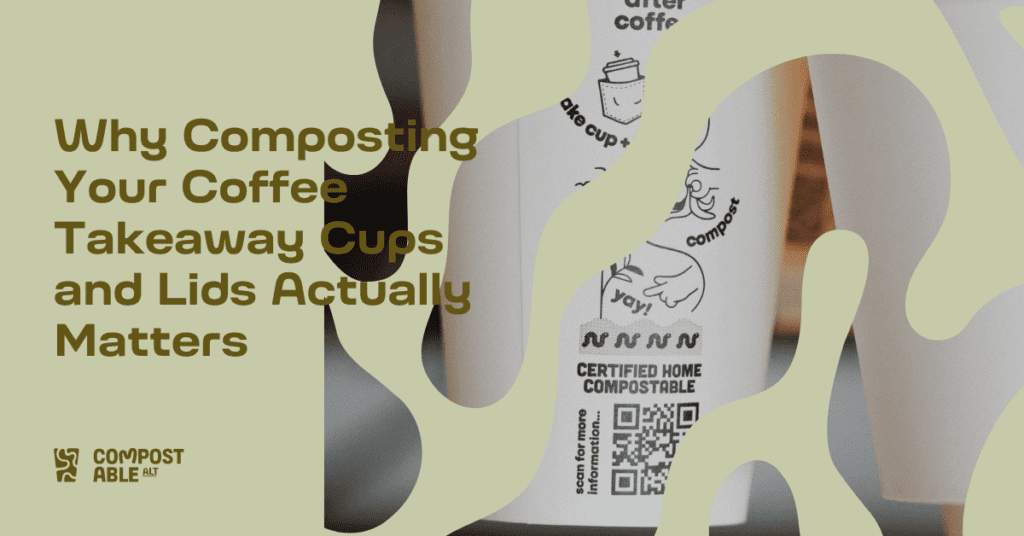
Why Composting Your Coffee Cups Takeaway Actually Matters
If you’re like most Aussies, coffee cups takeaway are part of your daily routine. Maybe it’s your morning long black from the local cafe or an arvo flat white on the go. But what happens after you’ve finished your drink?

